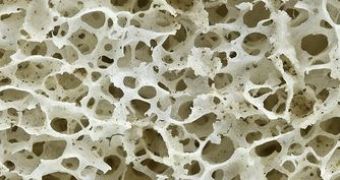Swedish scientists have associated low bone mineral density with bowel disease in children and adolescents, according to a thesis from the University of Gothenburg (Sweden).
This is the first Scandinavian study to investigate on the occurrence of low bone mineral density in children and teenagers with inflammatory bowel disease.
At the survey took part 144 inflammatory bowel disease patients, aged between six and 19, and about half of them had low bone mineral density or BMD.
The results suggest that it is important to treat IBD more efficiently and also to measure the BMD in this patient age-group.
If the development of the bone mineral density is severely disturbed during childhood and adolescence, the risk of osteoporosis provoking fractures later in life increases.
Susanne Schmidt, researcher at the Institute of Clinical Sciences, says that “Possible risk factors for low BMD were more severe disease with increased inflammatory activity in the gut, male gender and low body mass index.”
Schmidt adds that there are no international or national rules for monitoring BMD in children and adolescents with inflammatory bowel disease, that is why there is a necessity of checking for BMD, especially in patients with high risk factors, like those that have a low body mass index, a more active disease or those who are known to have low BMD.
“The results of the study also underline the importance of optimising the treatment of these patients to minimise the inflammation which is partly behind the low BMD,” she said.
Another factor that plays an important role in children’s BMD, is genetics.
Schmidt said: “we investigated the children’s biological parents and measured their BMD [and] we found a clear correlation between the parents’ and the children’s BMD.
“Where both parents had a low BMD, a child was six times more likely to have a low BMD too. A similar correlation has previously been described in healthy children and their parents.”
Nevertheless, further studies are necessary as scientists noticed that after two years, the BMD of the oldest patients began to recover, reports AlphaGalileo.

 14 DAY TRIAL //
14 DAY TRIAL //